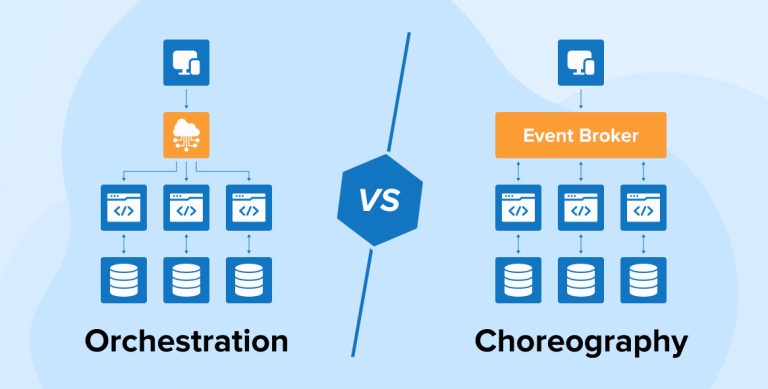
Microservices isn’t just an approach to software development, it’s also about rethinking the way how an app is brought together. The two most popular architectural patterns of this approach are Orchestration and Choreography. They refer to how microservices can be managed.
As a software development company, Tatvasoft believes that the key to building reliable and fully functional software applications lies in adopting the right architecture pattern for it. But how do you decide which one to choose?
This article debates the Microservices orchestration vs choreography for the sake of understanding these development models well and determining which option is suitable in which circumstances.
1. What Is Microservices Orchestration? How Does It Work?
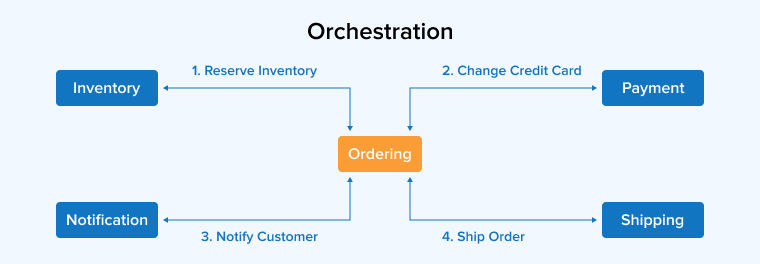
Microservices orchestration is the technique of handling multiple services and allowing them to communicate and share data across the system.
Orchestration, inspired by the orchestras, involves piecing together multiple microservices to build an application, similar to how musicians play different instruments together to deliver a good symphony.
Just as the orchestra has a conductor who ensures every musician plays their notes in the correct order, orchestras have a parent service that handles all the requests. This ensures that all the linked services have access to requests and can provide the requested information.
Based on the received data, the orchestrator generates a response within the main service which is then sent to the client application. The parent service enables seamless communication for each service to process API requests.
In this orchestrated approach, the parent service acts as a supervisor that controls interactions among microservices. It helps provide stability to the software and makes its status easily modifiable and measurable.
2. Benefits and Drawbacks of Orchestration in Microservices
Using the orchestration method in microservices is very beneficial, but it has some drawbacks. This section explores both aspects.
2.1 Benefits of the Microservice Orchestration
Some of the lucrative benefits of using the orchestration approach with microservices are:
Centralized Control and Observability: In an orchestrated system, a central coordinator manages and monitors all the interactions between microservices. Instead of keeping an eye on the overall application, this method encourages observing individual processes related to the app development. It gathers data and analyzes it regularly to help developers derive useful insights.
Simplicity: Implementing and maintaining the orchestration in microservices is simple compared to the choreography, as you have a central coordinator to handle all interactions.
Synchronizing Processes: Microservices orchestration allows you to synchronize all the processes as per the development requirements. This helps enhance the workflow.
Easy Scaling: Since every process is observed individually, it becomes easy to scale them quickly. You simply need to align the diverse interactions with the overall application.
Easy Error Detection: The individual monitoring and measuring in microservices’ app development helps identify the errors in the process quickly. Orchestration is also helpful in figuring out how the error occurred and how you can resolve it.
2.2 Drawbacks of Microservices Orchestration
By taking a closer look at the orchestration, you can realize that there are some downsides to its execution. It involves:
Tight Coupling: Microservices are normally loosely coupled which makes them highly flexible and scalable. But with orchestration, they are coupled tightly. So obviously this hinders them from being flexible or scaling easily.
Too Much Dependency: The services in orchestration are very dependent on each other. The reason for this dependency is the tight coupling and synchronous processes involved. Because of this, if any link in the chain breaks, the entire business process will be stopped.
The Addition, Removal, or Replacement of Microservices is Challenging: You need to update the central coordinator every time you change the configuration of the microservices orchestration. Hence it is difficult to add, remove, or replace a microservice.
Latencies and Availability Issues: The controller needs to establish direct communication with each service to assign tasks effectively. Establishing communication and receiving responses takes time even when working with a single microservice. But here, you will be dealing with hundreds if not thousands of microservices. So, the waiting period will be extended indefinitely. With this, the controller can’t manage the microservices efficiently.
Single Point of Failure: Every service in microservice orchestration is dependent on a central controller. Additionally, every service is linked with each other for effective data access. Hence, the failure of one service will lead to the failure of the entire chain. Moreover, the entire system goes down if the central controller fails.
3. Tools in Microservices Orchestration
If you are thinking about using orchestration in microservices, then you have to know about the relevant tools that make it easy to execute this method. Kubernetes is a leading option.
With a variety of features and a wide scope, Kubernetes can work in any development environment as an orchestrator. Other popular options that work similarly to the Kubernetes are Mesos and Docker Swarm.
There is a Cloud Native Computing Foundation that supports the development of orchestrator projects. It includes Kubernetes and has Crossplane in an advanced incubation phase. There are many orchestration tools available in the market and many more are to be released soon.
4. What is Microservice Choreography? How Does It Work?
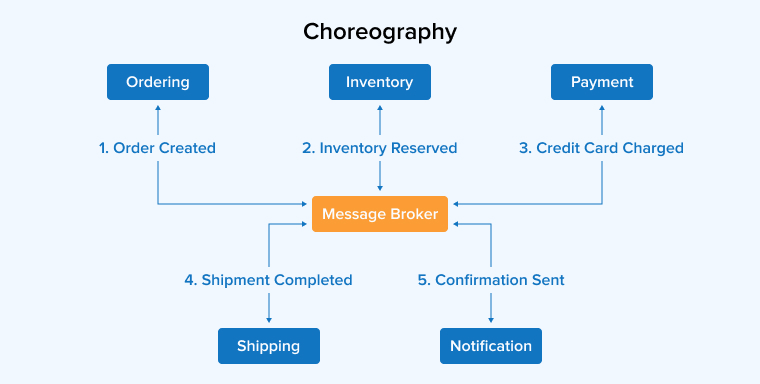
Just as the choreography helps stage a dance performance, Microservices Choreography is all about staging the moves of all services across the application. Every dancer has to perform their moves independently, but all moves are related to enhance the overall performance.
Similarly, Choreography allows the services to manage their functions autonomously while contributing to the overall app functionality.
Choreography is a decentralized approach in microservices architecture, contrasting the Orchestration model. Choreography microservices don’t need a central coordinator to manage the services. However, they require an event broker or a message broker for asynchronous communication.
The messages are sent to and received from other microservices through specific channels. Each microservice listens to the event broker to respond to the information or requests. They are aware of their responsibilities and are triggered by events.
Unlike the orchestrated approach with tightly coupled microservices, choreography involves loosely coupled microservices. This makes them flexible and highly scalable. You can update or modify the microservices without affecting the underlying business logic.
5. Benefits and Drawbacks of Choreography in Microservices
Every software development approach has pros and cons. and so does microservices choreography.
5.1 Benefits of the Microservice Choreography
The advantages of staging choreography in microservices include:
Decentralization: Choreography doesn’t have centralized control. All the services are self-managed. This reduces inter-service dependencies, making the system more resilient and less prone to failure.
Asynchronous Communication: In choreography microservices, communication is done asynchronously. This allows your system to be more efficient.
Loose Coupling: Microservices in Choreography are loosely coupled, enabling them to function independently. This aids in making your system highly scalable and less prone to failure as the failure of one microservice won’t affect others or the overall app’s functionality.
Easy Maintenance: Because every service with Choreography is developed and maintained independently, it becomes easy to make changes or maintain them.
Scalability: The Choreography microservices are a type of distributed system where each service is dedicated to a specific functionality. Although they are loosely coupled, each microservice is built and released independently. This makes it easy to scale the application.
5.2 Drawbacks of the Microservice Choreography
With so many upsides to using this approach, there are some notable downsides as well. To mention a few:
Needs a Mindset Shift: Not everyone can get started with Choreography. Its working is a little different than other methods. So, a mindset shift is a necessary prerequisite.
Difficulty Troubleshooting: With a decentralized system in place and the lack of a central coordinator, troubleshooting the choreographed system is very troublesome. When a domain requires multiple services, it could potentially trigger an event chain. As a result, the visibility decreases and troubleshooting becomes challenging.
Difficulty in Maintaining Business Processes: Various microservices are used to create a functioning business process. Due to each microservice being independent, it becomes very difficult to get a holistic view of the system or process. Due to the limited visibility, it is challenging to handle the business process effectively.
Complexity: The major drawback of this approach is its complexity. Because they are independent, every service has its logic and responds to the messages individually at their own time. With so many moving parts, the system becomes complicated to manage and vulnerable to failure.
6. Tools in Microservices Choreography
Unlike orchestration, you need an event broker for the choreography. Some of the tools that you can use as event brokers are Amazon SQS, Kafka, and RabbitMQ. You can seamlessly integrate a service mesh such as Isito or a runtime system like DAPR into an event-driven architecture for choreography.
7. Hybrid Approach
If you are working on a project that demands synchronous features, you need orchestration; if it needs asynchronous features, you should use choreography. But what if your projects require a mix of synchronous and asynchronous factors?
That’s the time when you have to combine both orchestration and choreography to get the maximum benefits from them.
In a hybrid approach, you will have an orchestrator that can grant you better visibility and control over microservices. Meanwhile, the elements of choreography will manage the communication between microservices and ensure their effective implementation.
However, making changes or updating the underlying logic in the microservices is very difficult. More importantly, this hybrid approach is highly dependent on the orchestrator. So, if there is even a little problem with it, the entire system can be affected.
8. Microservices Orchestration vs Choreography: Key Differences
Some key differences between Microservices orchestration vs choreography are:
- Orchestration is a centralized system with the orchestrator as a controlling unit, whereas choreography is a decentralized system with no controlling unit.
- For communication and executing the processes, the orchestrator assigns tasks to the microservices in orchestration, whereas every microservice in choreography is self-managed.
- Regulating and maintaining a business process is easier with orchestration. On the other hand, maintaining and regulating a process is challenging due to the many autonomous microservices in choreography.
- An orchestrated system is highly dependent on the orchestrator, if it fails, the entire system goes down. Meanwhile, a choreographed system only has loosely coupled microservices. So, even if one microservice fails, it doesn’t affect other services or the overall functionality of the application.
9. Conclusion
This blog shows that microservices orchestration vs choreography are unique approaches to developing microservices applications. Orchestration is a simple and centralized system whereas Choreography is complex and decentralized. Both offer multiple advantages and have a few limitations. You can even combine them and use a hybrid approach if it suits your needs. After all, only a development model that is useful for your project can be titled as the best.
FAQs
Which is better: Microservices orchestration vs Choreography?
There are certain factors like workflow complexity, system architecture, scalability, and more that could help you decide which approach works best for your project. It all boils down to your project requirements and scope of work.
What are the use cases of orchestration and choreography?
Orchestration is useful if you have to manage a centralized workflow with various components working synchronously. Choreography is useful when working with event-driven and decentralized workflows.
What is the difference between the orchestrator pattern and choreography?
One of the major differences between orchestrator and choreography patterns is how their microservices communicate. In choreography, microservices are self-managed and decoupled. In contrast, orchestration uses a central controller to assign tasks to each microservice in the architecture, which creates a single point of failure.
What is an example of Microservices Orchestration?
An API gateway that handles and keeps the communications between microservices safe is a common example of a microservices orchestration.
Scenarios:
Use case scenarios for Orchestration:
- When you want to create a centralized system
- When you want to have complete control over the microservices lifecycle
- When you have to create multiple services that work synchronously
Use case scenarios for Choreography:
- When you want to create a decentralized system
- When you want your services to act independently
- When you want to easily change or update the services without disrupting the system communication



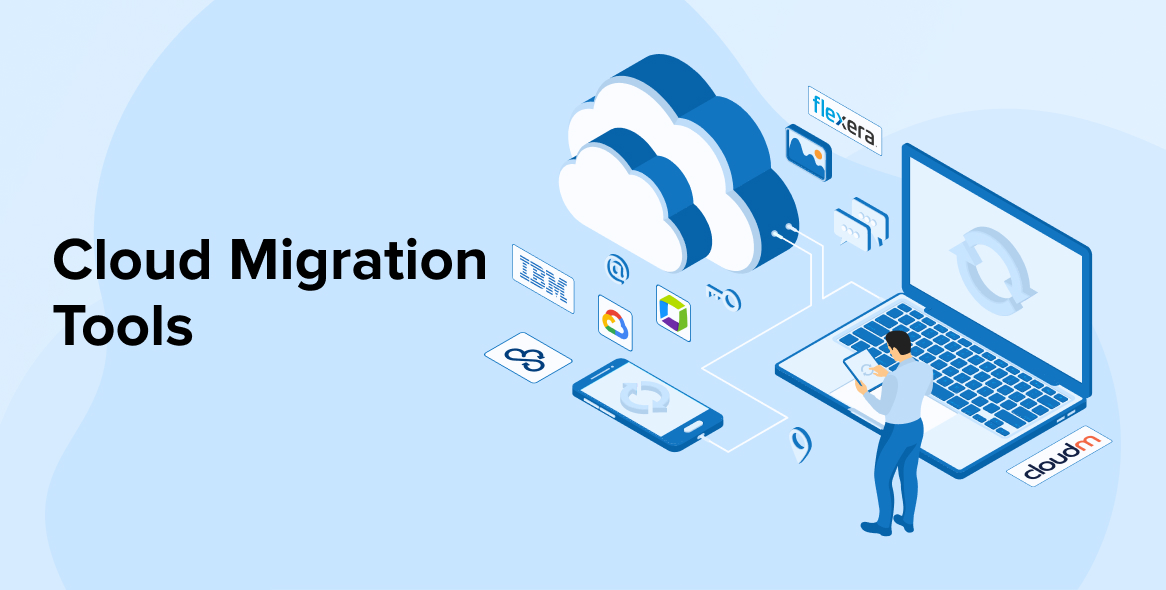
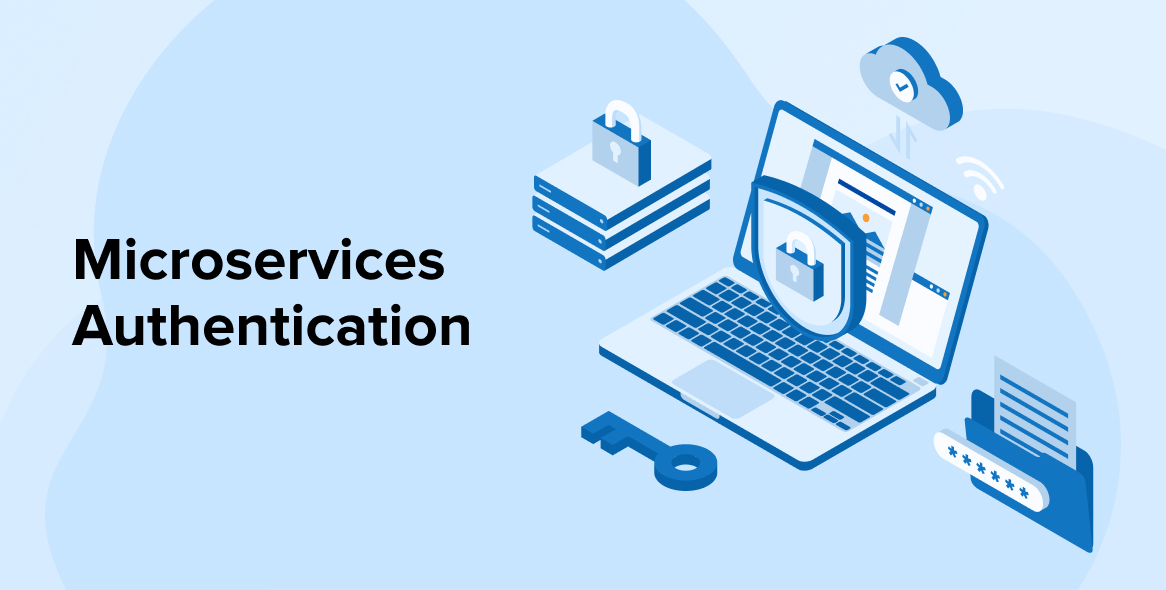

Comments
Leave a message...